#Jackery Camper Van
Text
Power dank der Kraft der Sonne
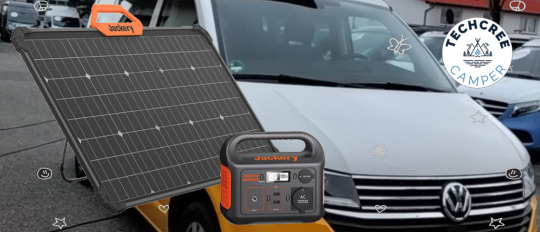
Powerstation + Solarpanel. Warum haben wir uns für die Jackery 240 und das SolarSaga 80W, das dazu passenden Solarpanel von Jackery entschieden?
Wie bereits in einem vorherigen Beitrag ausführlich beschrieben, haben wir unsere ganz individuellen Anforderungen zu Grunde gelegt. Darauf bezogen, hätten auch verschiedene Powerstations auch anderer Hersteller gepasst. Wir haben gut 4 Monate nachgeforscht und abgewartet. Am Ende ist es das Set mit der Jackery 240 und dem SolarSaga 80W geworden. Aber warum?
Hinweis: Beitrag enthält unbezahlte und kostenlose Werbung!
Erstmal bietet die 240 bereits alles was wir brauchen. Zweitens war das Sonderangebot ausschlaggebend, also der Preis des Sets. Ein weiterer Aspekt war die Baugröße und das Gewicht. Natürlich geht es aber auch um die Leistungsmerkmale und die einfache Handhabbarkeit. Und bei einem solchen Set ist zudem garantiert das auch alles zusammen passt und funktioniert.
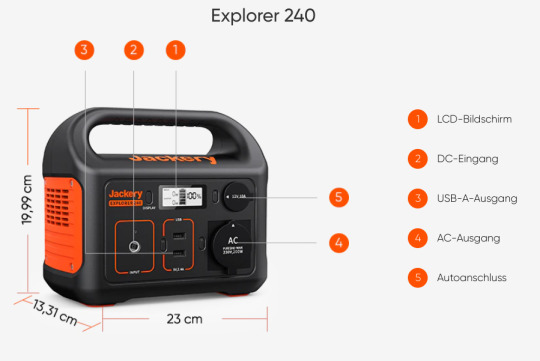
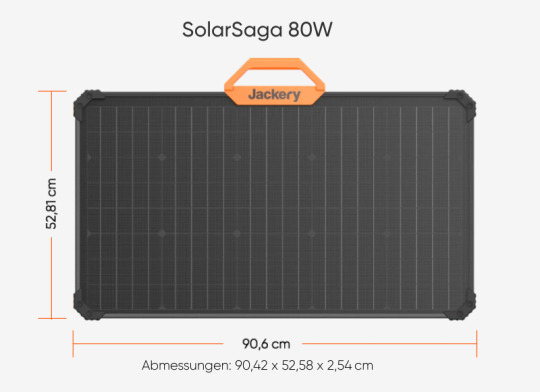
Bildquelle: Jackery Website
Im Lieferumfang ist neben der Powerstation und dem Solarpanel, ein Netzteil für Landstromanschluss, ein Powerkabel für 12V Anschluss im Fahrzeug, eiin Anschlusskabel für das Solarpanel anzuschließen und eine Bedienungsanleitung. Das Set wurde in einer sehr guten und schützenden Verpackung geliefert. Alles wirk hochwertig, stabil und übersichtlich.
Welche Anschlüsse bietet die 240? Neben der Ladebuchse, haben wir USB Buchsen, eine 12 Powerkabel Buchse und ein AC Anschluss für den üblichen Stromstecker. Dabei ist zu beachten, dass sich jede Buchse für die Stromabgabe einzeln ein- und ausschalten bzw. zuschalten lässt. Das birgt Vorteile. Das kleine LCD Display bietet die wichtigesten Infos über das was aktuell an Strom in W abgegeben wird, was eingeht und den Ladezustand in Prozent und einer Balkendarstellung.
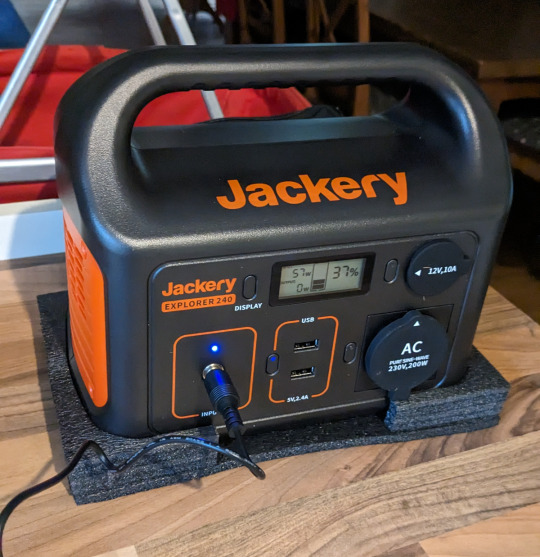
Übrigens: Die Kühlbox um Verlust zu vermeiden, schließen wir direkt an die 12V Buchse mittels des Powerkabels an. Nicht über den Schuckostecker an der Kühlbox! Die Jackery läd mit 57W über das im Lieferumfang enthaltene Netzteil am Landstrom. Bei der Lieferung war es mit 25% vorgeladen und schaffte die 100% nur wenige Stunden nachdem ich diese ans Stromnetz gehängt hatte.
Wer Werkzeuge einen Haarföhn oder gar eine elektronische Kochplatte betreiben will muss sich für ein Modell mit mehr Leistung entscheiden. Jackery bietet eine große Bandbreite ganz verschiedener Systeme für diverese Einsatzfelder an. Die sind dann logischerweise auch entsprechend teurer und größer, wie auch schwerer. Doch bei uns schwingt auch immer der Gedanke mit, dass wir das zulässige Gesamtgewicht des VW Busses beachten müssen und es summiert sich nunmal durch alles was man da so mitnimmt.
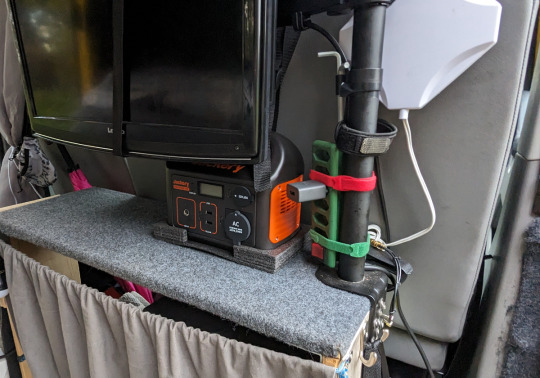
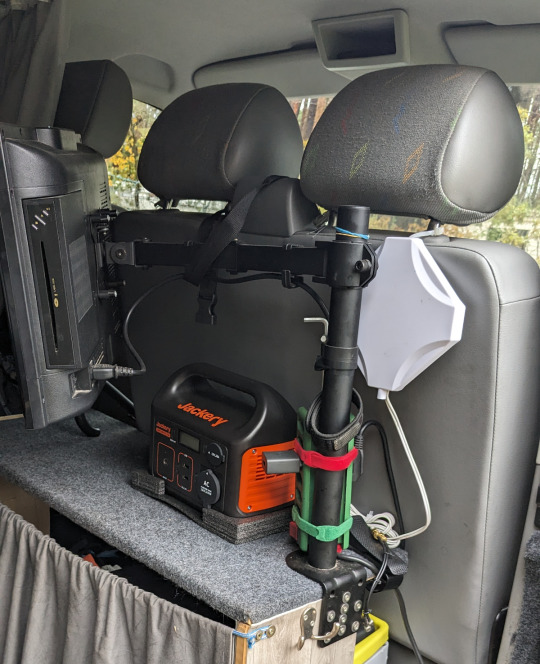

Wir haben einen zentralen Platz für alles was mit Strom zu tun hat. Von hier führt das Kabel eines Mehrfachsteckers zu einer Kabeltrommel, deren Kabel wir wiederum an der Hecktür rausführen können wenn wir Landstrom abnehmen. Daher passt auch die kleine Jackery 240 hier gut hin. Unterhalb steht die Kühlbox und auf der übrigen Ablagefläche unter dem TV Gerät liegen nachts auch die Handys zum Laden. Mit einem Gurt gesichert ist die Jackery hier gut verstauen. Und das SolarSaga 80W zu transportieren ist im VW Bus auch kein Problem.
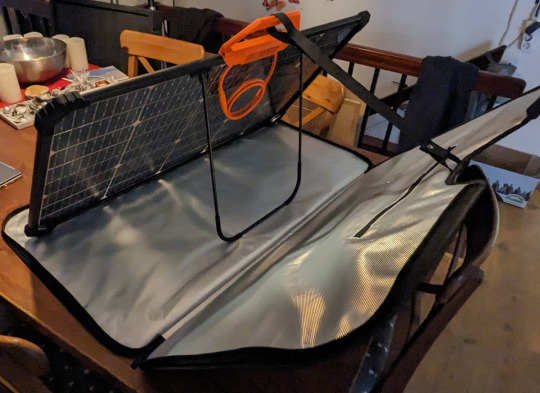
Die Tasche des SolarSaga 80W zeigt was an diesem Panel so besonders ist. Das Panel ist transparent und kann beidseitig laden. Die Tasche reflektier die Sonne auf die Rückseite des Panels und bringt dadurch zusätzlich ca. 5-7W. Grundsätzlich ist die Tasche für den Ladevorgang nicht zwingend nötig. Wird das Panel nicht benötigt, ist die Aufbewagrung in dieser Tasche zum Schutz des Panels vorgesehen. Ziemlich gut durchdachte neueste Technologie, die überzeugt.
Jackery hat damit ein maximal effektiv nutzbares Solarpanel im Angebot. Wer es braucht kann an diesem Panel auch direkt ein zweites Panel des gleichen Typs anschließen. Würden wir also später ggf. auf eine größere Jackery umsteigen, könnten wir das Panel weiter einsetzen und bei Bedraf für mehr Leistung erweitern. Für die Jackery 240 ist das nicht erforderlich, da hier die Stromaufnahme begrenzt ist und das Panel bie ausreichend Sonne genauso gut läd als wäre die Box am Stromnetz angeschlossen.

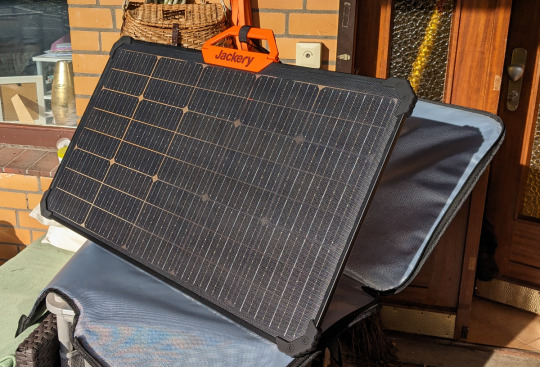
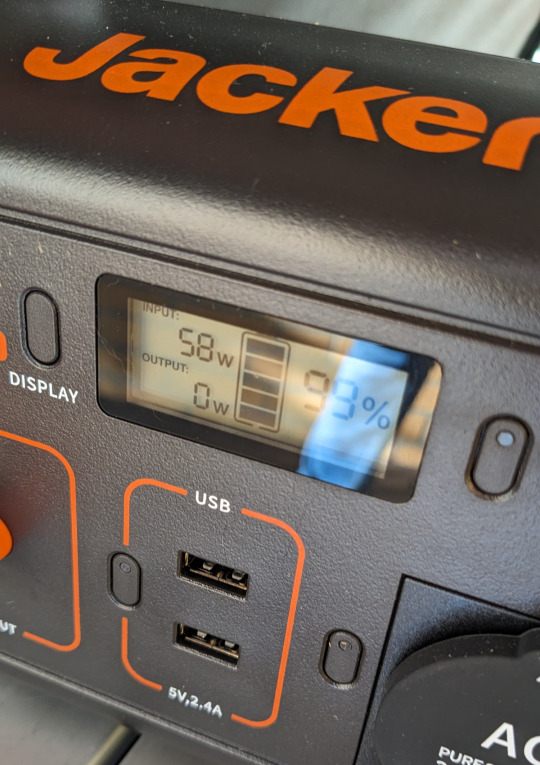
Beachtliche Leistung, denn im errsten kurzen Test, bei guter Wintersonne und dank der Reflektionstasche (wenn diese auch gut ausgerichtet ist) erreichen wir 58W. Super - funzt! Wenn auch ihr euch für eine solche Lösung interessiert, so empfehle ich euch vorher einige YouTube Test anzusehen und euch auch darüber hinaus umfangreich zu informieren. Aktuell sind gute Angebote verfügbar, doch ihr solltet euch nicht stressen beim Kauf einer solchen Lösung. Nehmt euch Zeit und vergleicht und entscheidet euch erst, wenn eurer Favorit entsprechend einmal im Angebot ist.
Wir sind zuversichtlich, dass uns die Jackery 240 + SolarSaga 80W gute Dienste leisten wird. Denkt aber daran, dass nach einigen Aldevorgängen die Leistung bei jeder dieser Lösungen nachlässt. Ich glaube Jackery gibt an nach ca. 500 Ladezyklen, dass sich die Leistung auf ca. 80% reduziert. Im Zweifel lasst euch durch einen Fachverkäufer beraten. Alle Angaben die ich hier mache, sind natürlich ohne jegliche Gewähr! Vorteil von kleineren mobilen Systemen ist zudem auch, dass ihr sie auch in anderen Fahrzeugen mitnehmen könnt und auch zum Angeln oder für eure Party mobil einsetzen könnt!
0 notes
Photo

Do you like storage solutions for your minivan camper conversion? I wanted to moved my Jackery 1000 to this area next to the kitchen cabinet so I thought up this mini platform/shelf. But to get it to work, I had to take off one of the drawers in my three drawer plastic storage unit. I previous painted these drawers green and I will paint the added shelf to match. And because my van’s Jack and tire iron are located in the panel on the left in this area, I will be adding hinges to the cabinet side of this new shelf and removing the mega you can see here on the left. This will allow me to raise up this shelf when I need to access my Jack. Still a work in progress. #mellownomadicadventures #mellownomadic #nomadicadventures #mellownomads #minivancamperconversion #minivancamper #minivanconversion #minivanlife #minivanlifediaries #minivanadventures #vanlife #vanlifediaries #nomadiclife #nomadicmovement #weirdosunite #minivanmovement #minivancamperclub #stealthminivan #stealthcamping #minivancamping #boondockinginminivan #minivanlovers #nomadiccommunity #youtubecreator #contentcreator (at Louisville, Kentucky) https://www.instagram.com/p/ChLd2JNuNoG/?igshid=NGJjMDIxMWI=
#mellownomadicadventures#mellownomadic#nomadicadventures#mellownomads#minivancamperconversion#minivancamper#minivanconversion#minivanlife#minivanlifediaries#minivanadventures#vanlife#vanlifediaries#nomadiclife#nomadicmovement#weirdosunite#minivanmovement#minivancamperclub#stealthminivan#stealthcamping#minivancamping#boondockinginminivan#minivanlovers#nomadiccommunity#youtubecreator#contentcreator
0 notes
Text
The Goal Zero Yeti 1500X Review: This Is a Yeti You Can Believe In!
Gloal Zero Yeti 1500x
10.00 / 10
Read Reviews
Read More Reviews
Read More Reviews
Read More Reviews
Read More Reviews
Read More Reviews
Read More Reviews
Read More Reviews
Read More Reviews
Read More Reviews
Read More Reviews
Read More Reviews
Read More Reviews
Read More Reviews
Read More Reviews
Read More Reviews
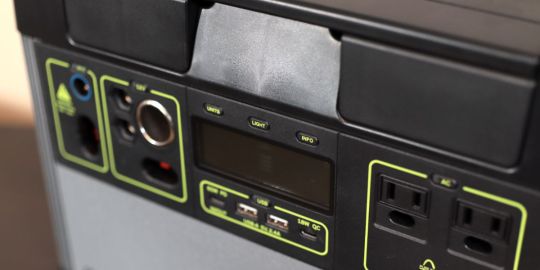
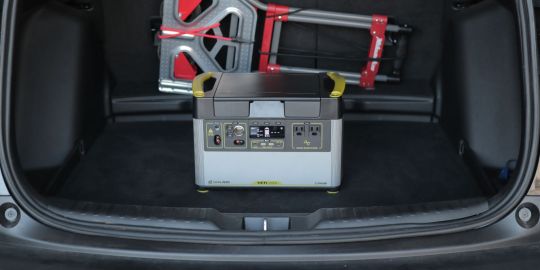



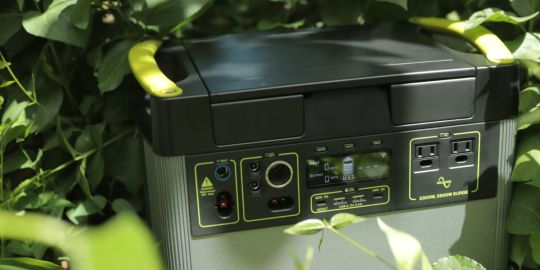
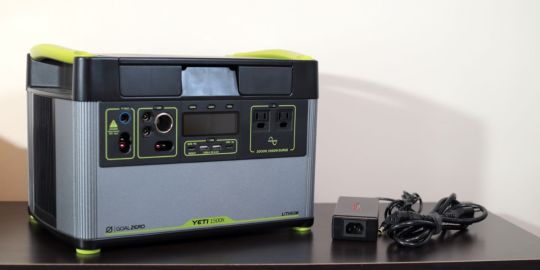


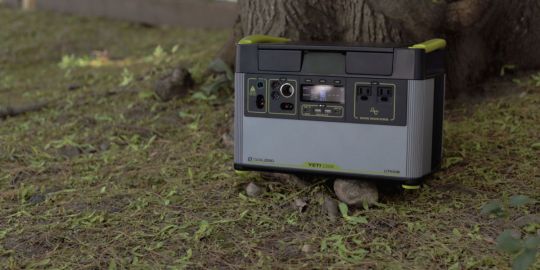



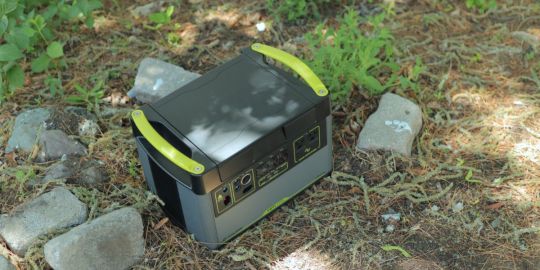
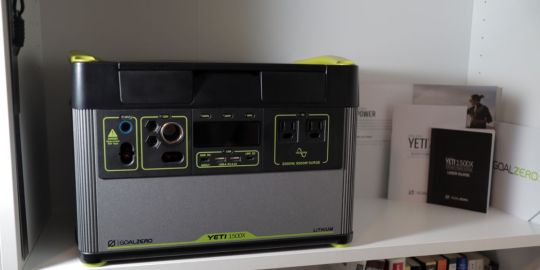
See on amazon
If you’re in the market for a portable power station that will exceed your expectations, then the Yeti is a top-tier choice.
Key Features
Specifications
Brand: Goal Zero
Weight: 45.64 lbs (20.7 kg)
Size: 15.25 x 10.23 x 10.37 inches (38.74 x 25.98 x 26.34 cm)
Capacity: 1516 Wh
Maximum Discharge: 2000W continuous / 3500W surge
Maximum Charge: 600W
Solar Controller: Onboard MPPT
Ports: Output: USB-A, USB-C, 12V Car, 6mm 12V, 120v AC, High Power Anderson Powerpole
Ports: Input: 8mm charge, Anderson Powerpole
Pros
Easy to use
High-wattage device capable
Yeti Link allows several expansion possibilities
60W PD port is lightning fast
Goal Zero app connectivity
Cons
Heavy
Lack of AC ports
Possible quality control issues
Buy This Product

Gloal Zero Yeti 1500x amazon
Shop
// Bottom var galleryThumbs1 = new Swiper('.gallery-thumbs-1', { spaceBetween: 10, slidesPerView: 10, freeMode: true, watchSlidesVisibility: true, watchSlidesProgress: true, centerInsufficientSlides: true, allowTouchMove: false, preventClicks: false, breakpoints: { 1024: { slidesPerView: 6, } }, }); // Top var galleryTop1 = new Swiper('.gallery-top-1', { spaceBetween: 10, allowTouchMove: false, loop: true, preventClicks: false, breakpoints: { 1024: { allowTouchMove: true, } }, navigation: { nextEl: '.swiper-button-next', prevEl: '.swiper-button-prev', }, thumbs: { swiper: galleryThumbs1 } });
If you’re planning on getting off the grid, you’ll need some portable power. Goal Zero’s newest power station, The Yeti 1500X, is a solution to this problem. But is it any better than the hundreds of other battery backups on the market? We’re going to help you answer that question today, so you can decide if the Yeti 1500X is right for you.
youtube
The Yeti is Goal Zero’s flagship portable power station designed for off-grid activities, job sites, tailgating, camping, and pretty much anything you can think of that requires portable power. The Yeti is available now for $2000 from the Goal Zero website.
It’s Not Easy Being Green

The 1500X houses a Lithium-ion Nickel Manganese Cobalt (NMC) battery rated for 1516 watt-hours. The Yeti also has a 2000W pure sine wave inverter that will handle up to 3500W of AC surge output power. It features pass-thru charging and an expansion port that you can use to connect to the Yeti Link module.
The Yeti Link module is, in my opinion, the number one reason why someone might choose the Yeti 1500X over competitors. It’s an exciting feature and one that you’ll want to consider if you’re looking to buy a portable power station. We'll go over the Link module later, but first, here are the unit's technical specifications.
Technical Specifications
Battery: Li-ion NMC
Peak capacity: 1516 Wh (10.8V, 140.4 Ah)
Lifecycles: 500 cycles to 80% capacity (1C is a full charge/discharge cycle)
Shelf life: 3-6 months without needing to be charged
MPPT charge controller: Yes
Weight: 45.64 lbs (20.7 kg)
Dimensions: 15.25 x 10.23 x 10.37 inches (38.74 x 25.98 x 26.34 cm)
Operating temp: 32 - 104F (0-40C)
Warranty period: 24 months
Ports:
2 x USB-A 5V, 2A (12W max) regulated
1 x USB-C 5-12V up to 3.0A (18W max) regulated
1 x USB-C PD port 5-20V up to 3.0A (60W max) regulated
2 x 6mm 12V up to 13A (120W max) regulated
1 x 12V car port up to 13A (160W max) regulated
2 x 12V high-power port up to 30A, (360W max) regulated
2 x 120V AC inverter 120VAC 60Hz, 16.5A (2000W, 3500W surge capacity pure sine wave)
2 x 8mm charging port 14-50V, up to 10A (150W max under lid & on the face of the unit)
1 x High power charging port (Anderson) 14-50V, up to 50A (600W max)
1 x Expansion module port under the lid with data port
What’s in the Box?

Included with the Yeti 1500X, you’ll get:
Yeti 1500X Portable power station
120W AC power supply (wall charger)
Owner’s manual
How Does the Yeti 1500X Work?

On the face of the device are a series of buttons that will enable each output gang. Additionally, three buttons allow the user to cycle through various settings on the LCD. To use the Yeti 1500X, you press one of the buttons and plug in your device.
Charging the unit is done via the AC wall outlet charger, solar panel, or 12V car charger (not included). The fastest way to charge this unit is by using the Anderson Powerpole input, which can accept up to 600W of input power.
With the full 600W, the Yeti can charge in about three hours. Using the AC wall charger, on the other hand, will charge the unit to full in about 13 hours. Overall, the Yeti is exceptionally intuitive to use, and most folks will find that it's almost second nature.
Who Is the Yeti 1500X For?

Like many of the power stations I’ve reviewed, the 1500X is for folks who like to go where power isn’t. That means off-grid enthusiasts, tailgaters, campers, and van-lifers. But the Yeti is also great for short weekend getaways or road trips where you won’t be near an outlet for most of the day.
The Yeti 1500X can also replace a gas generator for fume-free power. And, because of the high surge and continuous watt output, the Yeti can function as portable power for the job site. Goal Zero says that anything you can plug into a wall outlet at home, you can plug into the 1500X. You can also buy a kit that will allow you to connect the device to your home circuit breakers in case of a power outage.
If you’re serious about going off-grid, the 12V Anderson Powerpole port on this bad boy will power several off-grid devices. That means you can use it with things like a camping fridge, for example. You can also power lights, fans, and air conditioners. If your device gets power via an Anderson Powerpole connector, the Yeti will open the door to several possibilities.
What Makes the Yeti Different?

I have a Jackery Explorer 1500 unit, and I love it. But, the Yeti has something the MAXOAK and the Jackery don’t. And that is Yeti Link. The Yeti Link module expands the capability of the Yeti power station.
The Yeti Link gives users the option to add additional lead-acid power banks to the Yeti device. The module also allows users to attach the Yeti 1500X to their vehicle’s electrical system for recharging. With the Yeti 1500X and Yeti Link, extended off-gridding with mobile power is a genuine possibility.
Related: Camping Apps for the Perfect Camping Getaway
Testing

The first stress test for the Yeti 1500X was to overload the inverter and see if it shut down. To test the inverter, I used an 1800W hairdryer and a 900W clothes steamer. I chose these items because together, their max wattage would push past the Yeti’s 2000W continuous power output threshold but not past the surge capacity of the 1500X.
This meant that both of the devices would run without triggering the overload protection of the unit immediately. Turning on the clothes steamer resulted in an output of 735W from the AC ports. Adding the hairdryer pushed the wattage up to around 2250W. This wattage output held for the duration of the test, which was about 6 minutes. At that time, the water in the steamer boiled, and I shut the AC off. The overload protection on the unit did not kick in.

Based on this test, it seems as though the inverter is slightly underrated, but that’s not a bad thing. Having the ability to go past the 2000W output threshold without any problems demonstrates how far you can push the Yeti 1500X. Additionally, the app notified me via my phone that the output wattage of the unit was high and that the Yeti would discharge quickly.
These notifications are another great feature because the Yeti notifies you well before it completely discharges. For folks running high-capacity devices like refrigerators, this information could save you from waking up to a mess of spoiled food.
As for solar, I connected two 100W solar panels to the unit and was able to get around 180W of power from the pair while in direct sunlight. The single Anderson connector here was a bit of a drawback, however. If you have more than one solar panel with Anderson connectors, you’ll need an adapter to get them attached. Though, I was able to use 8MM connectors with the input ports of the Yeti.

Also, during testing, there was a point where I connected my iPhone X to the 60W PD port on the unit because my phone was about dead. This port charged my phone unbelievably fast, and within less than a half-hour, I was at full charge. Since I stumbled upon this 60W port, it's the first power port I go looking for when my phone charge is dwindling. I even prefer the port over the standard wall charger due to its speed.
The Goal Zero App
Image Gallery (3 Images)
Expand
Expand
Expand
Close
Image 1 of 3
Image 2 of 3
Image 3 of 3
window['gallery_1'] = new Swiper('#swipper-1', { direction: 'horizontal', spaceBetween: 20, slidesPerView: 1, centeredSlides: true, preventClicks: false, observer: true, observeParents: true, loop: false, keyboard: { enabled: true }, // If we need pagination pagination: { el: '.swiper-pagination', }, navigation: { nextEl: '.swiper-button-next', prevEl: '.swiper-button-prev', }, }); var images = document.getElementsByClassName("gallery-1-images"); for (var i = 0; i < images.length; i++) { images[i].addEventListener('click', function (event) { var swiperDiv = document.getElementById('gallery-modal-1'); var imagesArray = document.getElementsByClassName("gallery-1-images"); index = Array.prototype.indexOf.call(imagesArray, this); window['gallery_1'].slideTo(index, false, false) swiperDiv.style.display = 'block'; document.body.style.overflow = 'hidden' }); } function closeGallery(element){ element.parentNode.style.display = 'none'; document.body.style.overflow = "initial"; }
One of the most useful features of the Yeti is the Goal Zero app. This app allows you to monitor your battery capacity, control which gang of outputs you’re using, and monitor both input and output wattage. It's unusual to see an app like this for a power station, but it is a welcome way to interact with a unit that may be out of reach.
Unlike some apps, this one is well designed, and the Yeti 1500X connected without any issue. Once connected, users can name the device and even set up charging profiles with four different modes—performance, battery saver, balanced, or custom.
Temperature monitoring and output control are also available in the app. And, if you have more than one Yeti power station, you can pair multiples with the app to have complete control over your entire power station fleet.
What Do We Love About the Yeti 1500X by Goal Zero?

High continuous power capability and large battery capacity are big pluses here. Additionally, the ability to use the Yeti 1500X like you would a standard wall outlet is a boon. High-wattage devices like refrigerators, microwaves, and air conditioners are now in reach with this unit.
The expansion module is another superb feature. I like that you can use the Yeti with the module for other applications like hooking it into your vehicle or connecting it to your home electrical system. The module has to be one of my favorite features, and when I saw what it could do, the functions blew my mind. I can see myself purchasing a Yeti Link soon.
I also really like the Anderson Powerpole outs. Those are not something I’ve seen on many of the power stations I’ve reviewed. But they are something that I think more companies need to think about if they are targeting van-lifers or long-term campers. The magnetic lid is excellent for storing the AC adapter for the unit, and the instructions printed on the underside of the lid are beneficial for folks who aren’t going to sit down and read the manual cover to cover.
Finally, the app is a nice touch. The ability to remotely control your power station from your phone is fantastic.
What’s Not to Love?

Not much. However, during my research, I discovered several reports online indicating some people have had issues with the MPPT controller of the Yeti line. I haven’t had any problems, personally, despite running across several complaints. The MPPT controller on our test unit works well, so I can’t confirm these claims.
The biggest concern with the Yeti is the weight. It’s 45lbs, which isn’t light. In fact, I pulled a muscle in my back while slinging the unit to and from my car during filming. To fix this issue, I purchased a hand truck from my local hardware store. Using the hand truck makes it much easier to move the Yeti around.
Another thing I think some people will complain about is the lack of AC outputs. There are only two on the unit. While this is limiting, you can solve this problem by adding a cheap power strip to the unit. Just be cautious not to overload the inverter.
Can You Repair the Yeti 1500X?

Don’t even think about it. Goal Zero should be the only one to service the Goal Zero Yeti 1500X. Taking it apart could be dangerous unless you know what you’re doing. As for warranty coverage, the Yeti has a 24-month warranty against any manufacturer defects. Two years of warranty is relatively standard for a power station like this, and it increases my confidence in the product.
Should You Buy the Yeti 1500X by Goal Zero?
I have to say this little device is top tier. I think that if you’re in the market for a portable power station, and you want something that will exceed your expectations, then the Yeti is an excellent choice.
When I started evaluating power stations, Goal Zero wasn't on my map, but this unit has changed my mind. I think it’s an absolute hidden gem, and I can see why many people trust Goal Zero in the van life and off-grid communities. The Yeti 1500X is worth every penny, and to me, it earns a well-deserved ten.
The Goal Zero Yeti 1500X Review: This Is a Yeti You Can Believe In! published first on http://droneseco.tumblr.com/
0 notes
Text
The Jackery Explorer 1000: A Review
The Jackery Explorer 1000: A Review

There are endless reasons why one might want a small, portable generator. If you live a nomadic lifestyle in an RV, camper, or van, a generator can be used to power your electronics and other small devices. You may want to have a backup energy source at home, in case your power goes out. Regardless, when shopping for portable generators, you have two primary options. You can get a fuel-based generator or a solar-powered generator. In this article, we’re going to talk about the solar-powered Jackery Explorer 1000. Keep reading for everything you need to know about this little powerhouse. Battery Life The Jackery Explorer 1000 is a 1000w lithium battery solar generator. The lithium-ion battery is a 21.6V battery, rather than a 12V battery, which makes it about twice as efficient. Batteries with smaller voltages running the same amount of power generate more heat (and w
https://www.ecol.net/articles/the-jackery-explorer-1000-a-review/
0 notes
Text
Pläne zum noch mehr Autakie

Wie wäre es mit dem Starlink Umbau auf 12V, kommt dann auch eine Aufbaubatterie. Was noch?
Das schöne ist ja, dass es kein Ende geben muss, denn so ein Bulli Camper Van kann ein immer fortwährendes Projekt sein. So einen Bulli ausbauen, ausstatten und autark zu machen ist für viele ein Traum. Wir haben ihn realisiert, haben die Vor- und Nachteile kennengelernt und sind immer noch nicht satt an dem Thema.
Nachdem wir uns mit der Jackery 240 und dem Solar Saga 80 bereits ein Stück vom Stromnetz unabhängig gemacht haben und nun auch mit Starlink eine neue Dimension des mobilen Internets erreicht haben, ist es an der Zeit darüber nachzudenken, ob und wie wir ggf. den Bulli noch autarker machen können.
Das geht generell auf jeden Fall, doch je nach dem für welche Lösung man sich da entscheidet, ist es eine reine Kostenfrage. Also was das jeweils eigene Budget hergibt. Für uns steht fest, wir werden Starlink 12 V fähig machen und so in der Lage sein, dieses schicke Satelliten Internet dann auch unabhängig vom Landstrom nutzen zu können.
In dem Zusammenhang stellt sich aber auch gleich die Frage, ob wir den Bus nicht noch mit einer Zweit- bzw. Aufbaubatterie aufrüsten wollen oder gar müssen. Sinn macht das auf alle Fälle. Währen die Umrüstung von Starlink ca. 250-300 Euro kosten wird, ist der Invest für eine Aufbaubatterie etwas größer. Hier werden wohl ca. 500-600 Euro fällig.
Im Prinzip bedeutet das eine dann gute und funktionierende Lösung zu realisieren. Mehr kann man immer ausgeben, doch das muss nicht sein. Aus dem Bulli wird ja niemals ein XTura werden. Aber anyway, für uns würde es bedeuten dann wirklich 2-4 Tage völlig autark sein zu können und dann auch inkl. der Nutzung von Starlink. Soviel aktuell zu den Plänen. Mal ganz abgesehen davon, dass wir schon fleißig unsere große Sommer Tour planen. Dazu aber dann zu gegebener Zeit mehr...
0 notes